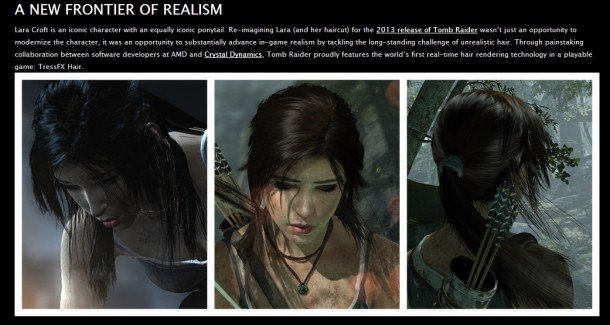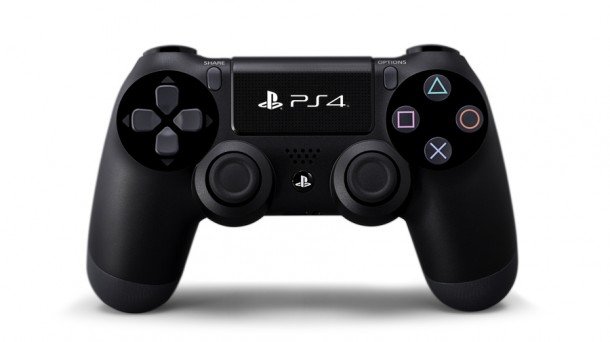Is Tomb Raider's performance trouble the herald of things to come for Nvidia's gamers?

Lara's locks are proving a problem for Nvidia customers, whose graphics cards are struggling to handle the AMD-developed hair-rendering technology. Given that Nvidia owns two thirds of the GPU market, that's an awful lot of Tomb Raiders out there suffering from shoddy performance - if they can even get into their game at all.
I'm one of these unlucky folk, the once-proud owner of a GTX 670, and I can't even get into the options screen, let alone play the game. Of course, loads of games have had dreadful launches, marred by server problems and driver/graphics card issues; even the likes of Half-Life 2 and Diablo III had trouble getting out of the gate. But the current disadvantage experienced by Nvidia customers could go beyond Lara's bounteous bangs. With AMD components sitting in next-gen consoles, this may not be the only time Nvidia's driver team find themselves left behind at a major game launch.
To be fair, some AMD customers have experienced issues too, and - let me ephasise - I don't for one second think AMD are deliberately aiming to cripple the performance of its competitor's hardware. But the fact that the game was coded to take advantage of AMD's graphics hardware first and foremost could cast a shadow on Nvidia over the course of the next generation.

Next-gen worries
It's all about the next generation of consoles. One of the blessings this coming console generation bestows on developers is the hardware parity between the PS4 and Microsoft's successor to the Xbox. Sony's specs reveal the PS4 is running on AMD hardware, and it's been heavily rumoured that Microsoft's console will do the same - both consoles essentially being PCs beneath the hood.
If all games are coded for PCs with AMD hardware inside then you are naturally going to get a more consistent experience with AMD tech in your rig than if you're running on different, competing internal gubbins.
"Nvidia will have to spend a lot more cash to make sure games work well on their hardware."
AMD aren't going to have to lift a finger, or spend a single dollar of their marketing budget, encouraging devs to code for their hardware anymore. Those developers are simply going to have to if they want to code for a next-gen platform. Meanwhile, Nvidia will have to spend a lot more cash, and parachute a lot more engineers into dev studios, to make sure these games are going to work well on their hardware.
Keep up to date with the most important stories and the best deals, as picked by the PC Gamer team.
They're going to be stretched. I would bet we see more big titles where final code only reaches Nvidia's driver team a few days before launch. That could then lead to a greater stratification in PC gaming, with Nvidia card owners having to wait for games to run on their hardware or suffering from titles coded to take advantage of the greater compute power of AMD cards.
Such things may sound familiar to older AMD/ATI card owners...

Not deliberate
It's tempting to think that AMD would make the most of their console dominance by pushing the uptake of proprietary technologies - like Lara's TressFX-powered hair - in order to intentionally disadvantage Nvidia hardware. But AMD have categorically and passionately stated this is not the case.
I spoke to Neil Robison, AMD's Senior Director of Consumer and Graphics Alliances (the guys who sort out the Gaming Evolved shizzle) in San Francisco last Autumn and he was adamant that deliberately sabotaging the performance of games on rival hardware would quickly destroy the PC gaming market.
"AMD are adamant that sabotaging the performance of games on rival hardware would destroy the PC gaming market."
“The thing that angers me the most is when I see a request to debilitate a game. I understand winning, I get that, and I understand aggressive companies, I get that. Why would you ever want to introduce a feature on purpose that would make a game not good for half the gaming audience?
"This is something that we just won't do, and it's difficult because that would be the easiest way to go, absolutely the easiest way to go. That's the easiest way to kill the market, the easiest way to destroy the PC gaming audience. The one that we need, the one that we want, and to be honest - we're all gamers - the one that we love. We could quickly destroy the whole market by just getting into that."
But it may not be up to AMD. If devs are coding to their hardware as standard then Nvidia is going to have to work very hard to make sure they don't get left behind. Nvidia is a canny company though, and they will have considered this. They're already taking steps to ensure their own proprietary technologies aren't being left in the next-gen locker.

This week Nvidia announced that its PhysX and APEX APIs are going to be fully functional in the PlayStation 4 - and by logical extension the Nextbox too. This is the first time we'll see Nvidia allowing PhysX on hardware other than Nvidia since it disabled the discrete Ageia PhysX cards from working.
"Nvidia won't enjoy playing follow-the-leader."
Nvidia is also going to be continuing to develop new graphics hardware, long after the next-gen console's specs have been completely finalised - and they'll be able to react to developer trends post next-gen launch.
Even with such commitment, I doubt they'll much enjoy having to play follow-the-leader to AMD architecture. It could be a rocky road, and with AMD's Roy Taylor calling for a return to the days of the good ol' graphics wars - actually calling for a fight - in a press briefing just before the GTX Titan launch, things could really heat up in the age old red vs. green battle.

Dave has been gaming since the days of Zaxxon and Lady Bug on the Colecovision, and code books for the Commodore Vic 20 (Death Race 2000!). He built his first gaming PC at the tender age of 16, and finally finished bug-fixing the Cyrix-based system around a year later. When he dropped it out of the window. He first started writing for Official PlayStation Magazine and Xbox World many decades ago, then moved onto PC Format full-time, then PC Gamer, TechRadar, and T3 among others. Now he's back, writing about the nightmarish graphics card market, CPUs with more cores than sense, gaming laptops hotter than the sun, and SSDs more capacious than a Cybertruck.

